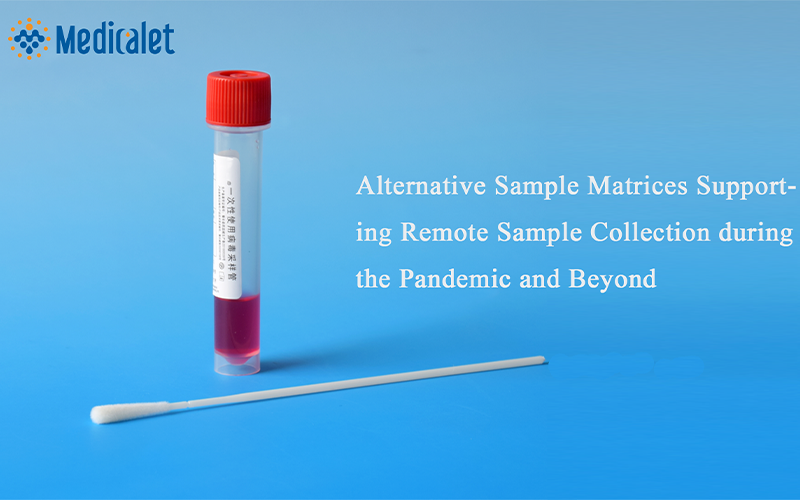
The COVID-19 pandemic has changed the landscape of healthcare delivery. It is estimated that 40% of US adults delayed or avoided seeking care during the pandemic and many hospitals saw a 40% to 80% decrease in outpatient visits. According to the CDC, there was a 2.5-fold increase in telehealth visits during the last week of March 2020. Alongside this shift to telemedicine, many laboratories saw a decrease in testing volumes especially in laboratory tests commonly ordered for managing chronic conditions such as diabetes.
The traditional model for sample collection requires blood draw by trained professionals, usually in proximity to the testing site, and transport of the specimens in appropriate temperature-controlled conditions. Therefore, alternative matrices that can be collected at home through a simplified collection process, and that are minimally affected by environmental factors such as heat and humidity, are particularly attractive for supporting telemedicine. Alternative matrices that fit these criteria include dried blood spots, microsampling devices, and saliva. Such specimen types have been used prior to the pandemic, mainly for newborn screening programs, research, and recreational testing. In addition to allowing patients and providers to adhere to CDC recommendations for telehealth services during the pandemic, the ease of at-home sample collection opens up access to laboratory testing for underserved populations. Furthermore, the convenience of at-home sample collection has been shown to improve adherence to treatment plans for chronic conditions and retainment of patients in clinical trials.
As the pandemic has accelerated technology adoption in many industries, the growing trend in telehealth visits should continue. The regulatory hurdles preventing the adoption of telehealth services have been lifted during the pandemic. It is anticipated that there will be a need for laboratories to support and adapt to these new trends in healthcare.
